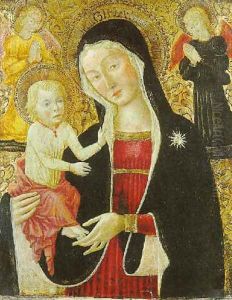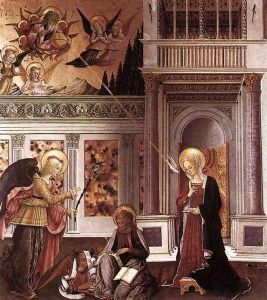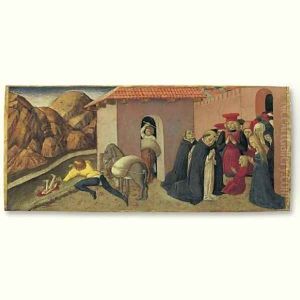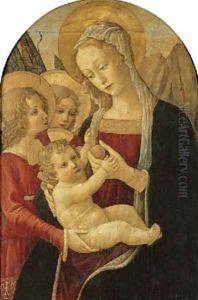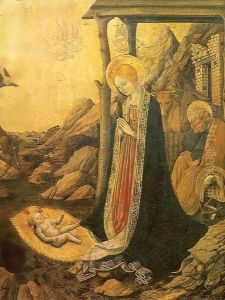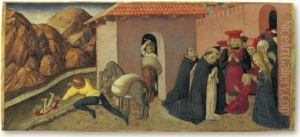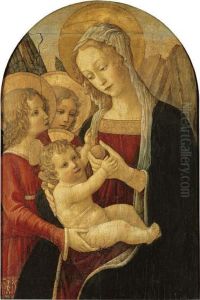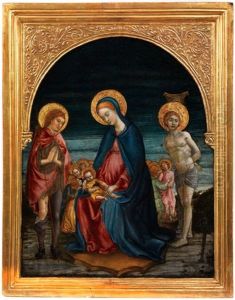Benedetto Bonfigli Paintings
Benedetto Bonfigli was an Italian painter born in Perugia around 1420. He was one of the prominent figures in the Umbrian school of painting during the Renaissance period. Bonfigli's work is characterized by its delicate coloration and detailed narrative scenes, often imbued with a lyrical and poetic quality. Though not as widely known as some of his contemporaries, Bonfigli's contributions to the art of the Quattrocento in Italy were significant, particularly in Perugia, where he executed many of his important works.
Bonfigli was active during a period that was highly innovative in terms of artistic techniques and the exploration of perspective and human anatomy. He was somewhat influenced by Florentine artists, as Florence was the epicenter of Renaissance art at the time. Nevertheless, his style remained distinctive, incorporating elements of the International Gothic tradition, which was still prevalent in Umbrian art. Bonfigli's most famous work is the series of frescoes he painted for the chapel of the Palazzo dei Priori in Perugia, depicting scenes from the life of Saint Louis of Toulouse. These frescoes are noted for their vibrant colors and the elegance of the figures.
In addition to frescoes, Bonfigli also produced several panel paintings and altarpieces. His works display a mastery of composition and a strong sense of narrative, as seen in his 'Annunciation' and the 'Adoration of the Magi.' While he did not achieve the same level of fame as his contemporary Pietro Perugino, Bonfigli’s artistic legacy influenced the subsequent generation of Perugian painters, including Pinturicchio, who is thought to have been one of his pupils.
Benedetto Bonfigli died in 1496 in Perugia. His works can still be admired today, particularly in Perugia's Galleria Nazionale dell'Umbria, where several of his panels and fresco fragments are preserved. Through his contributions to the Umbrian school, Bonfigli played a role in the broader narrative of the Italian Renaissance, showcasing the regional variations that enriched the artistic landscape of the period.
